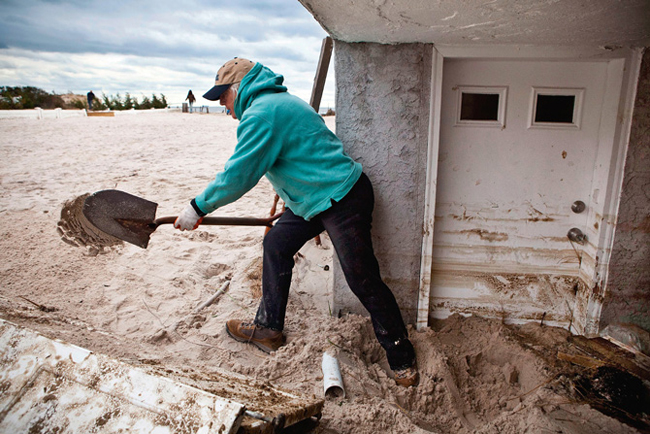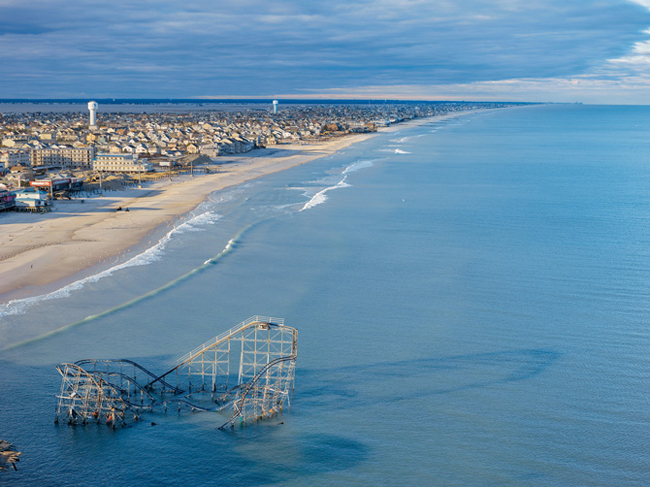A joint program of the National Oceanic and Atmospheric Administration and Sea Grant Programs in New Jersey, New York and Connecticut
NOAA and Sea Grant's Coastal Storm Awareness Program: Background
Following the one-year anniversary of Superstorm Sandy in October 2013,
an award of approximately $1.8 million from the National Oceanic and
Atmospheric Administration (NOAA) Sea Grant programs in New Jersey,
New York and Connecticut was announced to fund targeted social science
research and
related technology transfer to improve the public response to coastal
storm hazard information (see related press release - click here)

Digging out after Superstorm Sandy's damage in Long Beach, New York. Photograph by Andrew Burton, Getty Images
The intent behind the creation of this, the "Coastal Storm Awareness
Program" (CSAP) originated from a stark concept, as detailed in the
effort's Request for Proposals: "The hard reality is that many of the
human deaths and injuries caused by this historic, devastating storm
were likely preventable. Too many coastal residents either failed to
fully understand the severity of the storm and the dangerous conditions
it would produce, or chose not to evacuate in spite of the serious risks
of staying in their homes."
The objective of this research initiative is to better understand the
coastal storm hazards warning system, the information it conveys (what,
when, how, and by whom) and the factors that affect whether recipients
of this information decide to act on it. The goal of the program is to
save lives and promote public safety by creating tools that will better
inform people of the true severity of the danger from coastal storm
hazards and increase the likelihood that residents who should remove
themselves out of harm’s way actually do so and avoid becoming storm
casualties.
The program will have a two-year duration, with research completed in
the first 18 months. The final phase of the program will be spent in an
intensive effort to introduce the program’s products and research
results to the coastal storm hazard prediction and response community,
working with its members to adopt and implement technologies, tools and
procedures to improve coastal storm hazard prediction and the
understanding and responsiveness of the general public to these
warnings.
In January 2014, 10 CSAP projects were announced by The National Sea
Grant Office, which made separate, equal and parallel awards from the
funds provided by NOAA to the New Jersey, New York and Connecticut Sea
Grant programs (see related press release - click here).
From these monies, each individual state program is funding a handful
of selected research proposals. A portion of these funds also support
collaborative extension and communication activities identified by the
Sea Grant program managers and a Program Steering Committee comprised of
professionals drawn from NOAA's National Weather Service and emergency
hazard response community in the Sandy-affected area, as well as
representatives of public communications media.

Superstorm Sandy narrowed New Jersey's beaches by more than 30 feet on average. At
Seaside Heights, it swept away the pier under the roller coaster. Photograph by Stephen Wilkes for National Geographic